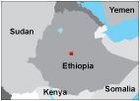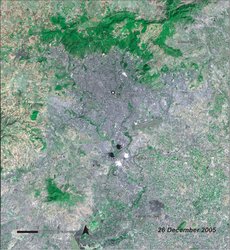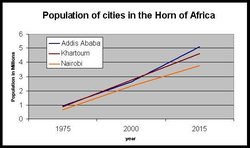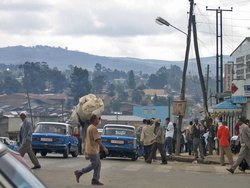Addis Ababa, Ethiopia

Addis Ababa, the capital city of Ethiopia, was established in 1889 and is now a city of 2.9 million. The city's growth has accelerated dramatically since a major urban migration into the city began in the mid 70s driven mainly by unemployment (Employment, unemployment, and well-being), poverty and declining agricultural productivity in rural areas, and relatively improved income and employment opportunities in the urban areas. The population doubled (Human population explosion) in the last twenty years and projected population growth points to 5.1 million in 2015. The city has also shown extensive physical growth over the years. In the 1920s, the area of the city was estimated to be only 33 km2 which grew to 224 km2 in 1984 and by 1990, it was estimated to be 530 km2. This massive urban sprawl is visible in the satellite images taken in 1973, 1986, 2000 and 2005.


The country has an annual population growth of 2.8%, and an accelerated migration to urban centers (6% or more per year). Nearly one-third (27%) of Ethiopia's urban population is living in Addis Ababa and this has created a substantial pressure on the city's housing, urban services and infrastructure. For instance, ten years ago (in 1996) the total housing stock was 350,000 where only 238,000 were residential units and the rest were business units. But in that same year, the total number of households was estimated to be 460,000 leaving 220,000 households or nearly 1,000,000 residents without suitable housing. This large gap led to unplanned settlement, illegal housing construction, and uncontrolled settlements encroaching on protected forest and reserve lands in different corners of the city. A recent estimate indicates that the city needs as many as 300,000 additional housing units. A low-cost housing project pioneered by German Technical Cooperation International Services (GTZ-IZ) has recently changed part of the cityscape and to some extent rolled back the growth of slums.

